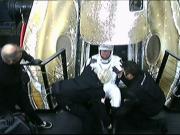
As of now, through several space exploration programs scientists have found exoplanets, dwarf planets, asteroids and mysterious galaxies and now researchers at Columbia University have announced that they have found evidence of the first known moon outside our Solar System.
The astronomers stated that the 'exomoon,' which is a natural satellite that orbits an exoplanet or another non-stellar extrasolar body, is located eight thousands of light-years from Earth. It has a size of Neptune and orbits a planet that is almost the size of Jupiter.
The space observatory, Kepler has confirmed more than 2600 planets, outside the solar system as of now. Scientists have analysed data from 284 exoplanets to identify an exoplanet. The researchers, involved in this study spotted the exomoon like object through by using the data collected by Kepler and the Hubble telescope,
Astronomers David Kipping and Alex Teachey have published their findings in Science Advances journal on Wednesday, October 3. But, both of them stated that this study needs more observation to understand the distant planetary system and to draw any conclusions.
Kipping, the assistant professor of astronomy at Columbia University in New York said that "We've tried our best to rule out other possibilities such as spacecraft anomalies, other planets in the system or stellar activity, but we're unable to find any other single hypothesis which can explain all of the data we have."
It took almost 40 hours to collect the evidence of the exomoon through the Hubble telescope. The astronomers monitored the exoplanet called Kepler-1625b as it passes between the star it orbits and then they observed the brightness of that star dimmed as the distant planet passed in front of it.
While describing the signs of the exomoon, the researchers said that firstly, three and a half hours later when the planet passed by, Hubble telescope records showed the second smaller dimming of the brightness of the star, which suggested a smaller object like the moon. Secondly, the astronomers noticed that the transit time of the planet occurs earlier than expected and as per Kipping "that's indicative of something gravitationally tugging on the planet," just like the way moon does to earth.
Co-author Teachey, stated "A companion moon is a simplest and most natural explanation for the second dip in the light curve and the orbit-timing deviation. It was a shocking moment to see that light curve, my heart started beating a little faster and I just kept looking at that signature. But we knew our job was to keep a level head testing every conceivable way in which the data could be tricking us until we were left with no other explanation."
The researchers used computer-generated models to understand how different scenarios fit with the observed data after the removal of artefacts from the Hubble data.
Teachey added that the moon model "emerges as the best explanation for the data, and it has the added benefit of being a single explanation for both the timing effects and the dimming of the star that we see in the data. Still, we are urging caution here. The first exomoon is obviously an extraordinary claim and it requires extraordinary evidence. We are excited about this result, certainly, it is a tantalising result."
Previously several studies related to the evidence of exomoon were rejected, but Kipping, along with colleagues Teachey and Allan Schmitt continued their study of this candidate since July 2017.
As per the study researchers, this is the best candidate so far and they have already nicknamed it as candidate satellite a "Nept-moon", because of its large size.
"the finding could provide vital clues about the development of planetary systems and may cause experts to revisit theories of how moons form around planets," Kipping said.








